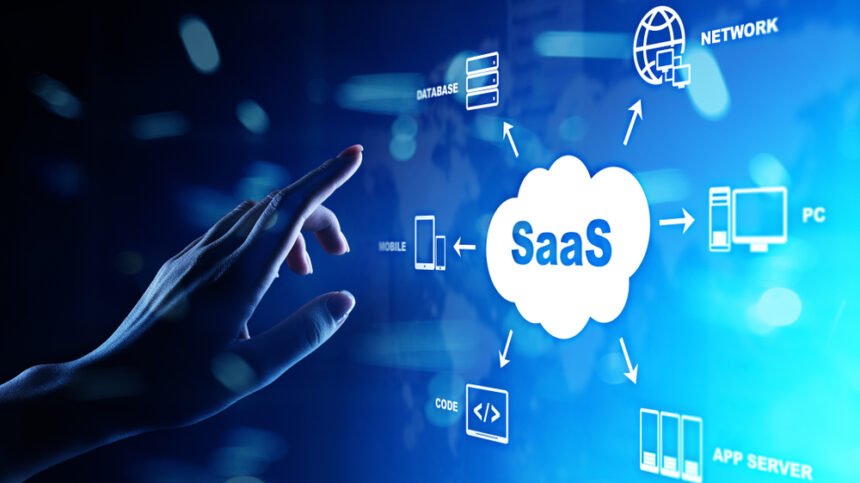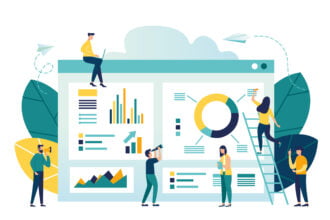Data analytics technology is becoming a more important aspect of business models in all industries. SaaS companies are no exception. They need to leverage analytics strategically to maximize their revenue.
Data Analytics is an Invaluable Part of SaaS Revenue Optimization
The importance of customer loyalty and customer service has become increasingly well-known and companies have needed to adapt their business models accordingly to gain a competitive edge. One survey found 83% of customers attributed their brand loyalty to the ability to trust a company. Additionally, loyalty is a main contributing factor when it comes to making a repeat purchase.
Customer retention and loyalty are particularly crucial for Software-as-a-Sales companies who rely on repeat subscriptions of products. In order to achieve this, many have utilized new technology and business strategies to provide solutions for customers.
There are a lot of ways to take advantage of data analytics to get the most value of your SaaS business. There are entire analytics interfaces dedicated exclusively to SaaS companies. Qrvey, Mixpanel and Domo are some of the best SaaS analytics tools out there.
However, knowing about the best SaaS tools won’t do you any good if you don’t have the right strategy in place first. In this article, we will cover what SaaS sales is, the SaaS cycle, choosing strategies and models, and how to measure the success of SaaS sales.
What Are SaaS sales?
SaaS sales is a complex process that utilizes a variety of sales techniques and models to provide solutions to client problems using specialized products.
The first stage of understanding SaaS sales is having an understanding of what SaaS products are and how to effectively sell them to customers, whether that is through business to consumer (B2C) or business to business (B2B).
What does SaaS stand for?
Software-as-a-service (SaaS) is a business model that provides users with a utility on a subscription basis. Users access the software through apps and browsers using the internet.
Advances in data analytics technology have made it easier than ever to develop SaaS models. Companies can leverage customer data and machine learning algorithms to offer the best possible service.
A couple of well-known examples of SaaS businesses are Spotify and Netflix, where users pay a monthly or yearly subscription to access the services provided. Netflix uses sophisticated analytics tools to offer the best movie recommendations to their customers, which is how they captured the largest market share in the video streaming sector.
SaaS sales is the process by which companies grow their businesses and sell to clients, focusing on acquiring, engaging, and retaining customers. Analytics doesn’t just help offer a better user experience to improve customer retention with customer data. It also helps improve marketing.
How is SaaS sales different?
SaaS sales differs from traditional sales as the sales models used are more complex and focus on customer retention over a period of time, rather than aiming for one-time purchases. SaaS sales processes are concerned with managing revenue by providing value in the subscriptions of the product which result in repeat payments. Customer retention is particularly important as the process relies on consistent income from clients. In order to achieve this, many SaaS companies use relationship selling which focuses on building a trusting, long-term relationship between the company and the client instead of concentrating on the transaction itself.
Additionally, sales reps for SaaS products need to educate potential clients on the full capabilities of the software in order to provide the value and problem-solving abilities that make a subscription a worthwhile purchase.
This is an area where analytics can be highly valuable. Sales reps can get access to important sales data to see what customers want to buy and what upgrades they like the most. This helps them offer the best services to customers to keep them onboard.
Using SaaS to Improve the SaaS Sales Cycle
The length of a SaaS sales cycle depends on several factors including:
- Type of customer
- The complexity of the product
- Price of the product
- Length of any free trials
If your client is a larger company, they are likely to take longer to form a decision as there are more stages and people required to come to a conclusion for purchasing products. Smaller businesses and individuals tend to carry out their decisions in a shorter period of time, making SaaS sales cycles less time-consuming.
If your software is complex, more time will be needed to properly educate prospective clients on the benefits of the product and to provide demonstrations.
Expensive products usually have longer sales cycles as it is a bigger commitment for the client and they need to know they are getting value for their money. This is again why demonstrations are so important, along with educating clients on your product’s full capabilities.
The length of a free trial will be added to the overall length of a sales cycle, therefore it is important to take this into account when deciding on a time frame offered to clients.
This is another are where analytics can be very helpful. You can use customer data to see where hang-ups are in the conversion process and address them more quickly, which shortens the length of the sales cycle.
What are the stages of the SaaS sales process?
There are seven stages in the SaaS sales process:
- Define the Ideal Customer: Before you attempt to chase leads, identify your company’s ideal customer so that you are more likely to acquire high-quality leads.
- Prospecting: This is when you can start using a marketing team or equivalent to increase awareness of your company and product for prospective clients.
- Qualifying: Set criteria to identify the most promising leads, therefore saving your company time and money by not chasing low-quality leads. At this stage, your company may offer product trials to prospective clients to gauge interest levels.
- Follow-up: If your customers are nearing the end of their trial period they may need a little encouragement to renew or upgrade their subscription. Contacting prospective clients at this point is an effective way of highlighting any concerns or questions they may have, at which point you can resolve any issues and provide further assistance.
- Handling objection: If your customer has any concerns or objections, skillfully handling them can avoid losing a deal. It is important to know your SaaS product well in order to answer any questions and emphasize the value for the client.
- Closing the deal: This is the conversion point from prospect to customer and any contracts are agreed upon and signed.
- Nurturing the relationship: The process does not end when the contract is signed, it continues through nurturing the customer relationship. This is a key stage for customer retention.
SaaS Sales Models
There are three models used for SaaS sales, each with its own advantages that can be utilized depending on the nature of the software on offer. Choosing the right SaaS sales model is incredibly important as it dictates your company’s ability to grow.
Customer Self-Service Model
This model works best for high sales volumes of products sold at a lower price point. Self-service software allows customers to access products and information easily, with less interaction with a sales team or customer support.
The self-service model is great for companies offering SaaS products that are easy to understand and not complex enough to require demonstrations from a SaaS sales rep.
Transactional Sales Model
The transactional sales model is the most commonly used of the three models, and it can be easily modified as your business grows and develops.
It usually requires a dedicated sales team that is trained to provide extensive knowledge of the product, along with online support and information that focuses on building relationships with clients. This is particularly important if your product has a higher price point as clients will be less likely to purchase having had little to no interaction with your company.
Enterprise Sales Model
Companies using the enterprise sales model usually have multiple sales teams dedicated to selling niche SaaS products that have a high price point and are sold in low quantities.
The sales cycle for these kinds of products are longer and require SaaS sales reps to spend time building and nurturing strong relationships with clients. Due to the higher price of the product, clients will usually expect more from the company including personalized customer service, contracts and invoices.
SaaS Sales Strategy
There are various tactics that can be used when selling SaaS:
- Create a value proposition for your SaaS product – identify your customer and provide a valuable solution to a problem they face.
- Create templates for your sales teams – these can include scripts, tips on closing deals, and guidance for your sales reps.
- Set targets for the sales teams – many successful companies set clear goals for their teams to increase motivation and performance.
- Keep track of performance using key performance indicators.
How do you track the success of SaaS sales?
There are many key performance indicators (KPIs) that can be used to track the success of your company’s SaaS sales. Here are some sales metrics that can be used to measure performance:
- Churn rate – the percentage rate at which you lose customers annually.
- Net promoter score – this measures customer experience and serves as a prediction for business growth.
- Monthly recurring revenue – the amount of income your company receives from clients monthly.
- Annual recurring revenue – the amount of income your company receives from client fees annually.
- Customer acquisition cost – how much it costs to acquire a new customer.
- Conversion rate – the rate at which customers are converted from potential to paying customers.
Once you have tracked these KPIs, you can identify areas of improvement and adjust your sales tactics accordingly.
Customer Data is Vital to SaaS Revenue Maximization
You need to utilize analytics to make the most of your SaaS business model. You will improve sales considerably if you use big data to improve the customer experience and strengthen your marketing strategy.











